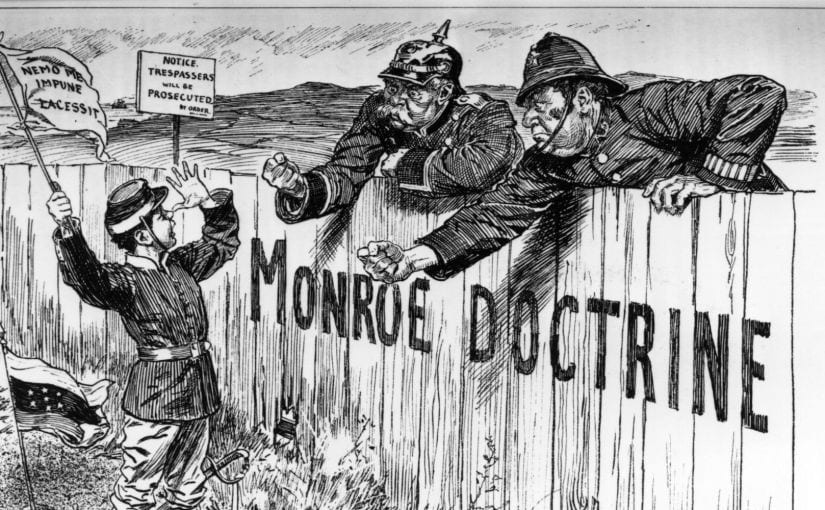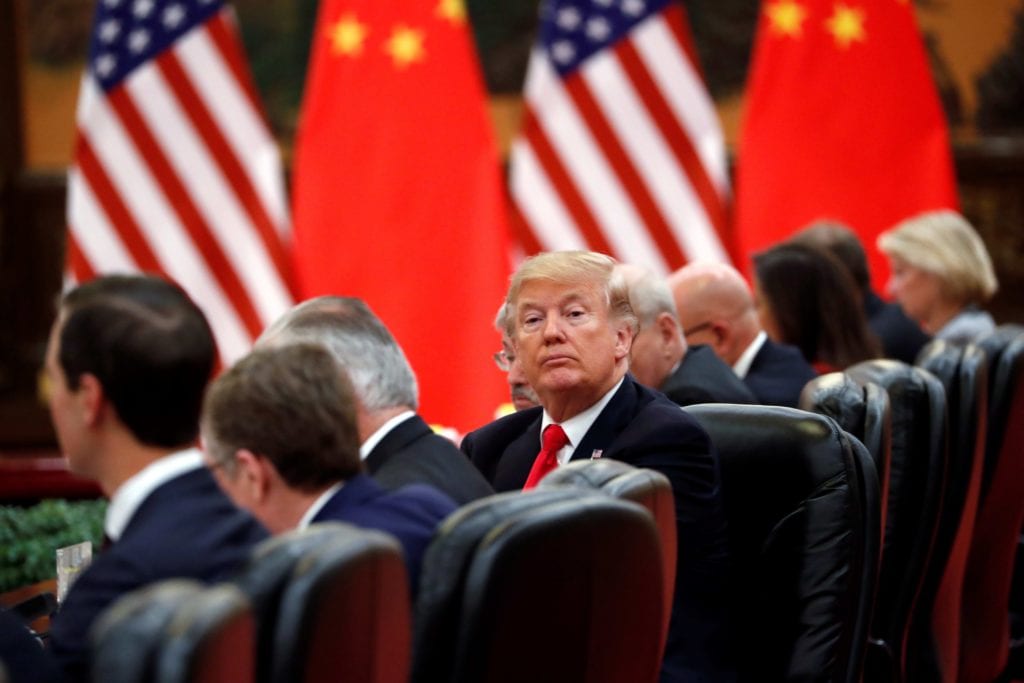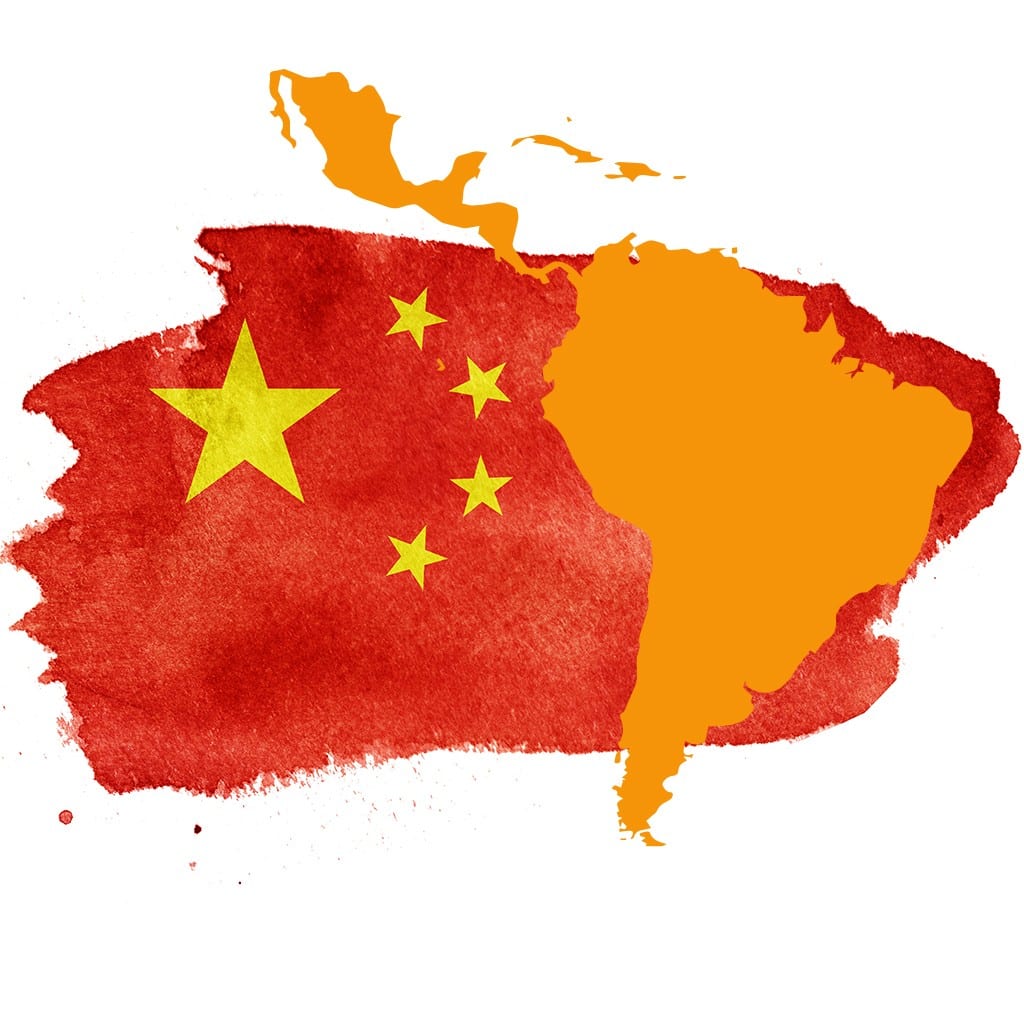Recently, in the once-traditional “backyard” for the United States, China has been asserted that the White House cannot but bother. Today, Washington seems to be trying to “revive” the Monroe Doctrine, however, in the 21st century, not only the countries of the region, but the Celestial Empire with the Kremlin, are opposed to it. What is the scale of the Chinese presence in Latin America and the Caribbean? What motivates Beijing to establish political, economic and military ties with countries that are far from its natural zone of expansion and geopolitical influence?
From the very beginning of its formation, the United States, proclaiming itself the main guarantor of democracy on our planet, was very jealous of the appearance of foreign powers (from other continents) in the Western Hemisphere. Washington announced the dominance model almost two centuries ago in the Monroe Doctrine. By the way, it is worth recalling that at that time, the United States was four times inferior to the current American state in the territory. In addition, then in 1823, at the time of the sounding of this Doctrine by the US leader James Monroe, the requirements were put forward more moderate, which was based on the geopolitical vector in the White House foreign policy towards Latin America. Nevertheless, Washington’s appetite for its “backyard” began to grow rapidly after the World War II, after which the United States finally established itself as a world power.

However, after the collapse of the USSR in 1991, the White House, having lost its main rival and finally believed in its exclusivity, switched from the Latin American vector in its foreign policy to the conquest of Eurasia. Especially this change in geopolitical sentiment manifested itself after the September 11, 2001 attacks.
It was with this alignment of forces in the Western Hemisphere that the Celestial Empire decided to fill the vacuum created by Washington’s withdrawal from Latin American installations. Beijing’s intentions were very clearly stated in the White Paper in 2008, which then, 11 years ago, was almost neglected. This document emphasized the importance of stable, despite the Pacific Ocean separating them, mutually beneficial ties between China and the countries of Latin America that have passed the test of time. At that time, after the “left” turn, the region was dominated by states with governments, often hostile to the United States and hailing a model of mutually beneficial economic development. On the other hand, Beijing’s undoubted successes were also in favor of the Chinese example, which, thanks to its unique model, was able to remove about eight hundred million people from hunger and poverty over the past 30–40 years. A very significant factor is the fact that the Celestial Empire was able to increase the standard of living of ordinary Chinese. It is logical that many Latin American countries admired such a result and sought to implement it.
It is worth noting that the main goal of all documents of the State Council of the PRC, affecting the countries of Latin America and drawn up from 2008 to the present, is to achieve comprehensive cooperation and partnership based on absolute equality, trust and mutual benefit. This approach to economic interaction is appealing to the Latin American elites, who, despite the existing successes in improving the living standards of their citizens, still need to implement large-scale infrastructure, scientific, technical and energy projects.
In turn, the White House is well aware of such primary needs of the Latin American region today. Traditionally, the Washington Annual Conference on the Americas highlights the existence of significant investment opportunities in Latin America and the Caribbean. Nevertheless, for several consecutive years, the Chinese have again outstripped the United States in these projects: while the White House persuades large American companies to work with partners in the region, Chinese state-owned enterprises act on orders from Beijing quickly and efficiently.

Between 2000 and 2018 Chinese state-owned companies have invested more than $120 billion in Latin America. From 2005 to 2018 the Chinese state-owned banks, “China Development Bank” and “Export Import Bank of China”, issued over $145 billion in loans: most of these funds – $98.9 billion – to energy projects and $28.9 billion to infrastructure projects. In addition, transport corporations such as the “China Harbor Engineering Company” and IT companies occupy a special niche. The corporations such as “Huawei” and “ZTE”, with which the President Donald Trump has been struggling without success for nearly two years, are building up telecommunication networks in many Latin American countries.
According to leading analysts, the White House in recent years has tightened its rhetoric in relation to Latin American countries. Sometimes Trump’s statements evoke associations with the Monroe Doctrine, certainly with the realities of the 21st century. In turn, Latin American states do not want a repetition of history, therefore, they are implementing measures in defiance of the United States. For example, the opposition of the Organization of American States (OAS), with headquarters in Washington, is the Community of Latin America and the Caribbean (CELAC, Spanish – Comunidad de Estados Latinoamericanos y Caribenos, CELAC) – a continental association of 33 countries, which do not include the United States and which is considered an alternative to the OAS.
In addition, there was a Chinese presence here, the Celestial Empire is actively cooperating with the CELAC through the “China-CELAC Forum”, as well as a four-year cooperation plan (2015-2019). Within the framework of this Forum, the PRC and Latin America have the opportunity to interact in the areas of economic development, strengthening mutually beneficial ties, energy policy, etc. First of all, this format of cooperation provides Beijing with the opportunity to promote “soft power” in the Latin American and Caribbean region.
Summing up, it is worth emphasizing that if the White House intends to improve relations with the countries of the Latin American region, Donald Trump and the State Department, along with the American elite, must finally come to terms with the fact that the Monroe Doctrine in its classical concept has long been outdated. The essence of the Monroe Doctrine in the 21st century, at least from the point of view of Latin American states, is not in the ambitions of a superpower and the intention to dominate in the Western Hemisphere, but in the responsibility to protect the interests of the whole region that the United States could assume. However, while the White House is trying to regain its “backyard,” new players (Russia, China, India) are gaining ground in Latin America, who intend to develop ties of interaction with Latin American states on the basis of mutually beneficial and fair cooperation.


